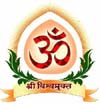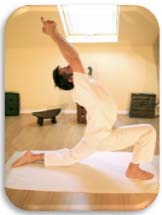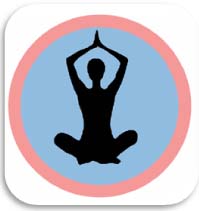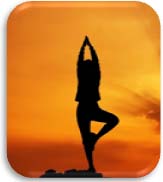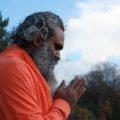Don’t shake hands with corona just say, Namaste…!! नमस्ते

Thanks to Coronavirus the names goes worldwide and people understand the tradition importance. of Indian greetings.
As the deadly COVID – 19 pandemics is spreading across the world faster, global leaders are taking all the major precautions including to greet each other by ditching the hand shake, kissing and hugging with endorsing Indian way of greetings “Namaste” नमस्ते to limit the spread of deadly virus.
Table of Contents
Etymology and origin:
As we all know India has a uniqueness in its own for architecture, colors, food, nature, science and respect. Indian tradition always welcomes their guest with smile on face with full of love in heart with the gesture of hands togetherness Namaste.
Which means “I BOW TO THE DIVINE IN YOU”!!
Originated from Sanskrit word:
Namaste

NAMASTE “ it’s a Respectful greeting” ..!!
The term name found in the Vedic literature, names – krita and related terms appear in Hindu scripture Rigveda, in the sense of worship, adore.
While in Atharvaveda, namaskar appears as a salutation, valediction, worship, homage and honor towards the person.
Symbolic meaning:
Namaste is usually spoken with a slight bow and fingers pointing together, palms touching and pointing upwards, thumbs close to the chest or on third eye.
This gesture is called “Anjali Mudra” which is also known as “Pranamasana”.
Anjali is a Sanskrit word for “divine offering”. Derived from Anj,earning to “Honor” or “Celebrate”.
Mudra means “seal” or “sign”. The meaning of the phrase is “salutation seal”.
In the most common Anjalimudra, the hands are held together near the heart chakra (thumbs resting lightly against the sternum) or at third eye i.e. Adnya chakra (thumbs resting in between the two eyebrows).
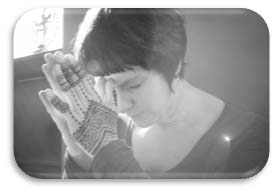
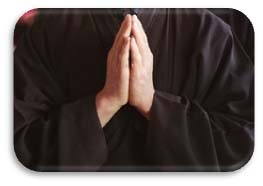
Or at the crown chakra i.e. sahastrakar chakra (above the head).
Did you ever try the Yoga Sana poses with the Anjali mudra?
In some yoga posture, the hands are place in Anjali Mudra positions to one side of the body or behind the back.
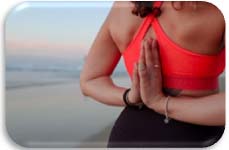
It is a “centering pose” which according to practitioners, help to alleviate mental stress and anxiety and is therefore used to assist the practitioner in achieving focus and coming into meditative state.
The physical execution of the pose helps to promote flexibility in the hands, wrist, figures and arms.
Did ever your yoga teacher started and ended up yoga class with saying Namaste?
It literally means she/ he wanted to express her expression to bowing the divine energy in you.
There are lots of yoga poses which poses the namaste mudra with its benefits.
Benefits in Yoga:
According to practitioner:
Helps to alleviate the mental stress and anxiety used to assist the practitioner in achieving focus coming into a meditative state. It also promotes he flexibility of fingers, arm, wrist and hands.
Asana variations with namaste mudra:
- Surya-namaskar (sun-salutation)
- Tadasana / samasthiti (mountain pose)
- Vrikshasana (tree pose)
- Virbhadra Sana (warrior pose)
- Parshwa-uttanasana (asymmetrical forward bend)
- Prasarit-padottanasana (wide leg forward bend)
- Utkatasana (chair pose)
- Vatayanasana (horse pose)
- Padmasana (lotus pose)
- Buddha- padmasana (bound lotus pose)
- Durvasana (standing balancing pose)
- Dwi-pada-sirshasana (feet behind the head pose)
- Kandasana (navel pose)
- Samkonasana (straight angle pose)
- Matsyasana (fish pose)
- Anjaneya Sana(crescent moon pose)
Other Expression:
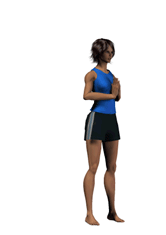 In ancient Hindu scriptures such as Taittiriya Upanishad, as “ATITHI DEVO BHAVA” (treat guest like a God) prescribe a dynamic of host-guest relationship which embodies the traditional Indian philosophy of revering guest with same respect as a God.
In ancient Hindu scriptures such as Taittiriya Upanishad, as “ATITHI DEVO BHAVA” (treat guest like a God) prescribe a dynamic of host-guest relationship which embodies the traditional Indian philosophy of revering guest with same respect as a God.
It expresses the politeness, courtesy, honor and hospitality from on person to the other. It is used in goodbyes as well.
Promotes the respect of oneself and others too.
As per Ayurveda:
The pancha- mahabhuta / five elements (either, air, water, fire, earth) all these five elements are present in our body with denotation of each finger.
Doing Namaste mudra all the fingers and palm togetherness started to putting slight pressure on each other which started to activate these five elements in our body as a maintaining resource.
Ayurveda also describe about the Marma points this are some vital points in our body which also gives benefits with the namaste mudra.
- Balance the feminine and masculine energies, logic, and intuition and strength.
- Natural remedy for stress and anxiety
- Useful for entering into meditative pose
- It balances the left and right hemisphere of the brain.
- Activates your heart chakra.
- Control your anger.
- Remove all the nervousness
- To gain the peace of mind
- Reduce ego and negativity
- Activate your adnya chakra
- Help to experience the divine energy in you.
So now don’t forget to greet people with this positive attitude of Namaste!! For a Better Health,Positive Energy and Respect.

NAMASTE – नमस्ते
Written By…
|
Dr. Pallavi Shinde is the director at Shree Vishwamukta Yog, Ayurved and Panchakarma Clinic at Pune, India. She always uses ayurvedic proprietary formulations for many chronic health diseases & many products for Skin Diseases & beauty products. She is a hardcore Researcher, Practitioner, Promoter of Ayurveda. Contact today to book an appointment. |
